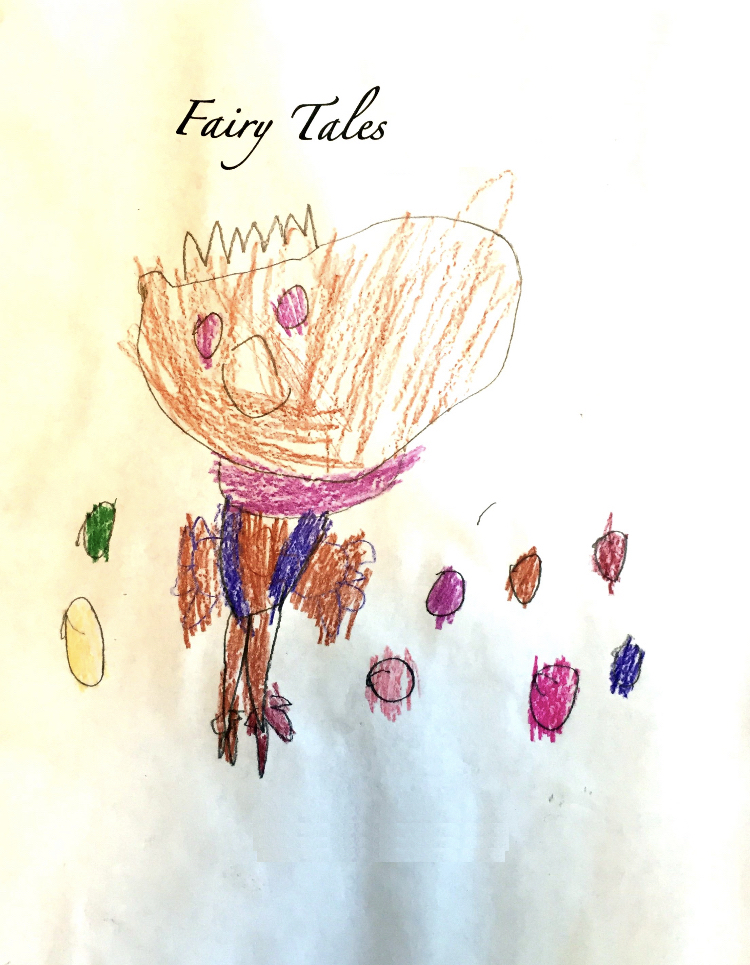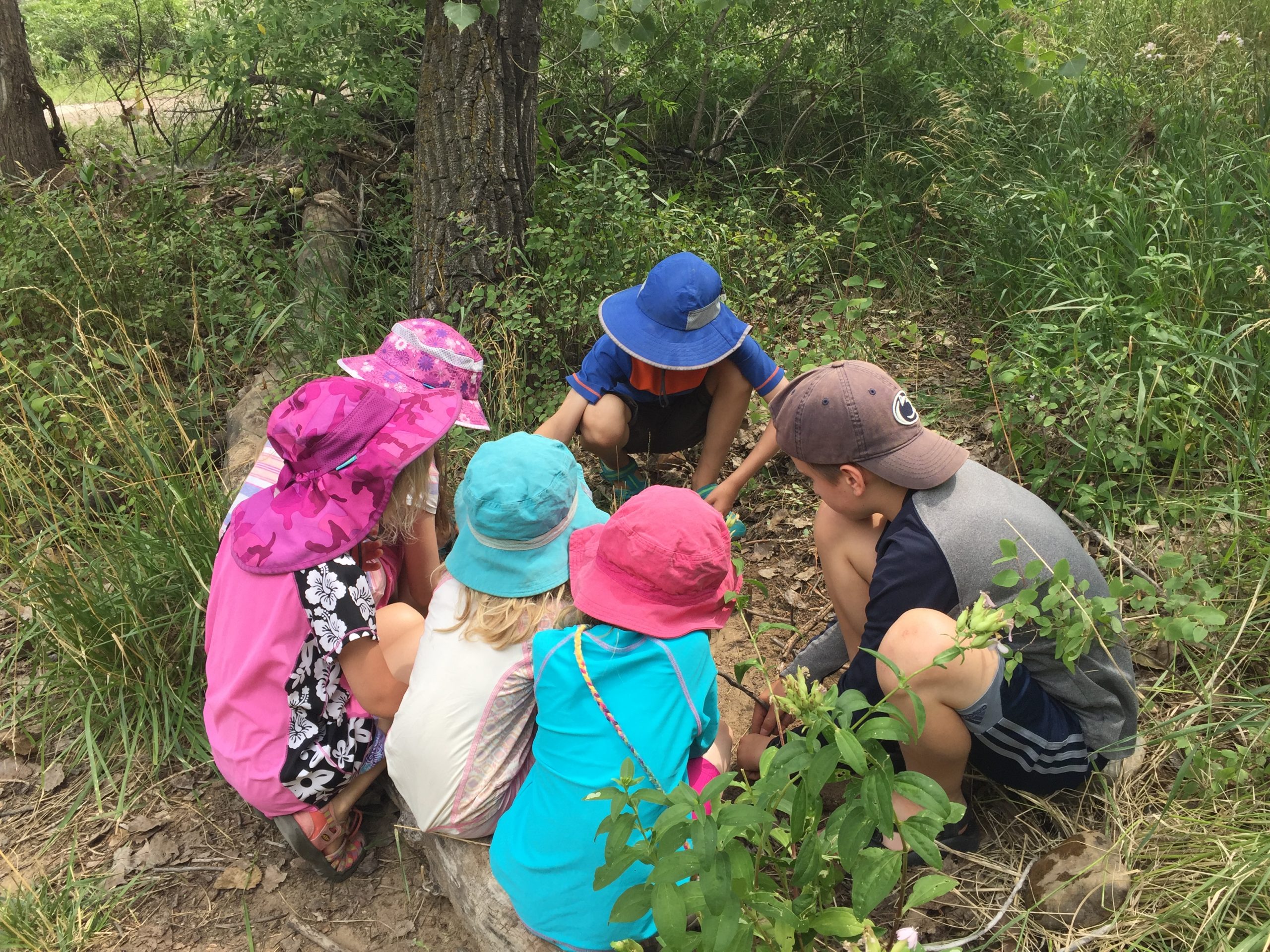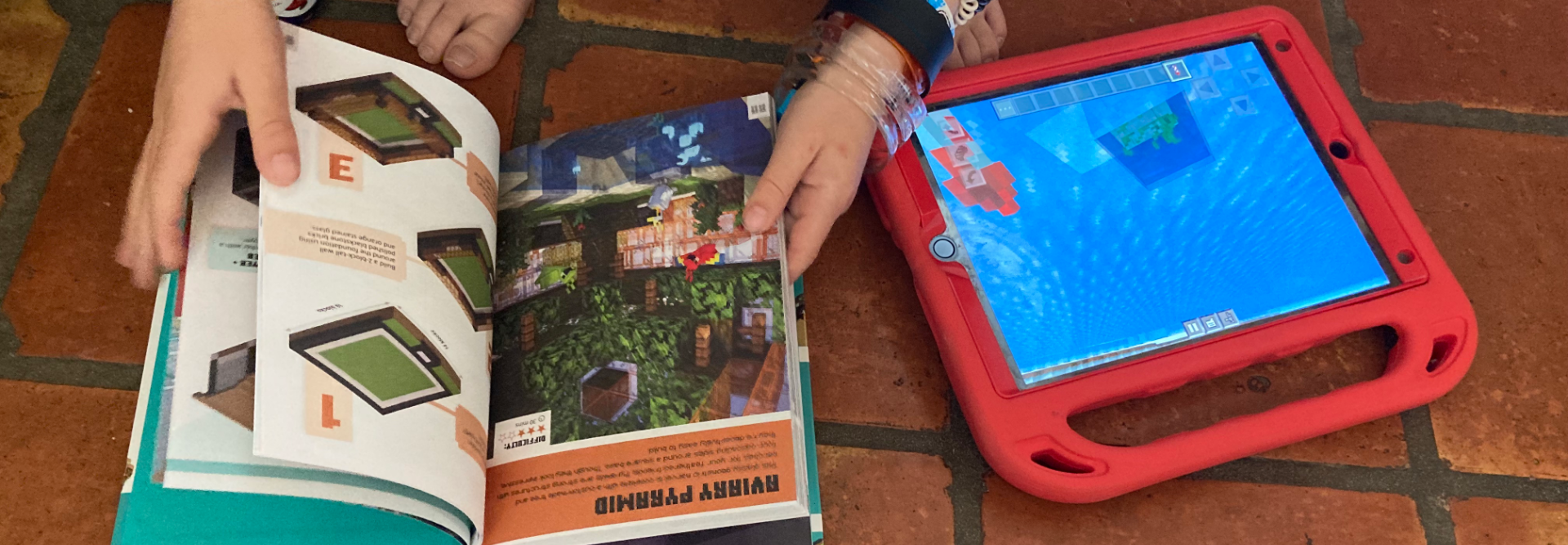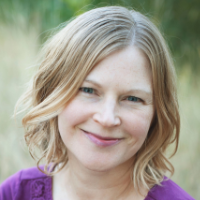My children, ages 13, 10, and 6, have never been to school. We have many years of joyful life exploration together under our collective belts. Yet this year feels different. This is the first year that we have fully embraced self-directed learning.

Our homeschool style has always been eclectic and child-centered. When my daughter was five, we spent the entire year reading fairy tales from around the world. Each month or so we read a variety of different versions of one story, and then she wrote and illustrated her own version. When she was done with the project, we bound the book and placed it in a spot of honor in the living room, so that we could read it together regularly. I will treasure that book forever. I should add that I offered both of my boys that same project when they were five, with varying levels of interest. We read a lot of fairy tales, but suffice it to say that no keepsake books were produced in the midst of their explorations, and that was totally fine. Projects and curriculums were largely presented as “offerings.”
Two pillars of our homeschooling life together have been a small science group one day a week, and a full day of free nature play on another day. I organized both of these events, which allowed me to create a “cohort” feeling for my older children while homeschooling, which they enjoyed. They saw the same close friends several days each week with lots of time for free play. Our science group used a structured curriculum to guide our hands-on interdisciplinary explorations. It was academic, but there were no tests or grades. They were fully involved in the decision-making process in planning our schedule each year, and they loved science.
Our time in the woods has formed some of our most integral homeschooling experiences, and continues to do so. Each week – rain, shine, or snow – we gather with friends in the same beautiful wooded area. We parents lay out blankets and spend our time visiting with each other, while the children roam near and far. The older ones may make the long trek to “The Canyon,” a ravine some distance away, where they can fully escape from any prying eyes. The youngest ones play in trees and forts within eyesight. Stick forts magically appear in our woods, some of them quite large and elaborate, and the children often add their own embellishments. “Trading post” has been a popular game over the years, with a variety of different currencies on different days including leaves, mud balls, carved sticks, and milkweed pods. The children have names for many places in the land, including “Coyote Hollow.” There are trees to climb, ditches to navigate, and so many adventures to be had.

We have a few safety agreements, including a buddy system. We originally made the agreements within the context of community democratic decision-making, with the understanding that they could be revised in later group meetings. Yet calling group meetings is exceedingly rare – for the most part, the kids have made it clear that they just want to play, with minimal adult supervision or intervention. In ten years of running our “Forest Kids” group, with children exploring together and usually out of earshot, we have never had a significant injury or problem – other than the occasional concerned passerby suggesting they should go find their grown-ups. I am sure many of my children’s best childhood memories will be from their time in the woods, with no adults in sight. I have always considered the lessons they learned there to be more critical than anything that could be found in a book – independence, friendship, resilience, and exploration.
So much of our lives has always felt like self-determined, free-form learning. But there were also parts that I would call more “consensual learning.” I myself delighted in academic knowledge from a young age (though I still felt like a fish out of water in the rigid system of coercive education). As a homeschooling parent, there were many things I wanted to share with my kids, including interesting math, fabulous books, games, and stories of other places and cultures. There were also a few things, like spelling curriculums, that I tried to introduce them to for more schoolish reasons – though those generally had a very short longevity.
In many homeschooling spaces, “unschooling” is still seen as radical. In spaces focused on self-directed education, “homeschooling” is often described as rigid school at home. Based on my 13 years of time spent in home education spaces, neither of these perspectives feels accurate. My experience suggests that while people use different terms, there are many in these two camps who are closer together in their practices than either realizes. Many homeschoolers are very centered around their children’s interests and wishes, while also feeling that it is reasonable to ask kids to consent to certain things that they would likely not choose given full autonomy – like working through a structured math curriculum. Many unschooling parents also work hard to facilitate opportunities and explorations, though these may be more free form or completely child-led.
Embracing unschooling is a philosophical change, moving from parental control to individual control. In practice, there are three main changes in our daily life that feel like we are living an “unschooling” life instead of practicing “family-centered, eclectic homeschooling.”
First, a deep embracing of each child’s autonomy. While we have always valued respect for each individual, when the kids were younger and we had to travel as a group, we necessarily had to do a lot of compromising within our family unit. If we planned to go to the Science Museum and meet up with some friends, it wasn’t really an option for one child to choose to stay home at the last minute. That level of choice and freedom is possible now that they are older and my husband works from home. We no longer have to travel as a group of four, and both of the boys regularly choose to stay home. It has been an unfolding and a practice of acceptance to transition to this new way of life – to recognize that when I make a fun plan, it truly is an offering and they may or may not choose to participate.
Second, we truly let go of any expectation around engaging with curriculum. I love math and we have really amazing math resources that I would have adored as a child (I worked through standard math textbooks in my free time for fun!). I have really enjoyed sitting down with each of my kids and working through brain teasers together, and seeing how their brilliant minds work. They are all good at math. And yet, right now, none of them wants to work on formal math. Happily for them, I’ve been doing a lot of my own deschooling work to realize that I’m not doing them any favors by pulling them along at this point. I will admit that this is one area I still have occasional relapses in, and I’ll ask hopefully, “Hey, do you want to do some Beast Academy with me?!” I guess as long as it is a true question, in the spirit of choice, I can still be considered a good unschooler. The truer course is to just start doing some problems myself and see if anyone naturally joins in – sometimes they do!
Finally, we are now three months into leaning in to unlimited screen time. For many years I prided our family on our very set one hour a day of free screen time, during the sacred 4-5pm hour. This arrangement wasn’t without some struggles, and I never liked how my kids would immediately drop anything else they were engaged with, no matter how exciting, as soon as 3:59pm rolled around. Yet, during their many other hours of free time each day, my children played happily with LEGO, read books, listened to podcasts, played outside, made art, and generally were engaged in a wide range of “wholesome” and culturally approved activities. It felt like a system that worked, and we probably would have stuck with it, if my youngest child didn’t have such a strong internal compass. This is a child who can smell coercion from a mile away. As he joined his older siblings in their longtime passion for Minecraft, one hour a day just wasn’t enough, and he began to protest loudly.
At first we mostly held the limit, but expanded the time frame a bit. Surely an hour and a half a day of Minecraft was enough! But one day I had an epiphany – what if Minecraft is for them what books were for me? I read books intensely, obsessively as a child. I always had a book at hand. I regularly slid a novel inside a textbook to read during class, read books at recess, in the bathtub, first thing when I woke up, and right until I went to sleep. Books were my lifeblood and the worlds I visited were magical. Could I have been a happy child if my mother had only allowed me to read books for one hour a day? The thought was so intensely repellent that we went screen-limit-free that very day.
It was a rocky first couple of weeks. I still found it disturbing to see my six year old reaching for Minecraft as the first thing when he woke up, and he did choose to play for many, many hours. I felt shut out of his world, and sad that he was choosing a digital life over the many things I valued more. My older kids also experimented with many hours of screen-based activities, though they were more balanced with choosing other hobbies as well. There were definitely days when I worried about them getting enough movement and variety in activities.
However, I quickly began to see the many benefits of unrestricted screen time. My teen, who had been spending the vast majority of his time alone in his room, was now choosing to hang out in the living room for several hours a day playing Minecraft with his siblings. They were talking, laughing, making plans, building, and exploring the digital world. I made an effort to learn to play too, though at this point in my life, video games for their own sake are very low in my list of preferred activities.
However, I have now learned to highly value video games as a place of connection. As I learned to play Minecraft, usually guided by my youngest, I began to understand what it was about this digital world that was so compelling.
As a doctoral student, I was studying Self Determination Theory (SDT), as outlined by Richard Ryan and Edward Deci (Ryan & Deci, 2000).[1] According to SDT, all humans naturally seek three things that enhance their well-being and maximize internal motivation – competence, autonomy, and relatedness. In this digital world, children can beautifully access all three of these needs in a way that is not always easy to manage in the physical world. They demonstrate competence as they explore and master the game, with seemingly limitless opportunities to expand and develop their knowledge. They are also uniquely autonomous in a digital world, which can easily be switched from the specific goals and interesting challenges of survival mode to the infinite possibilities of creative mode. Finally, video games bring children together in community and connection. Now I really did understand why one hour a day was not nearly enough for this deep and fascinating passion, which is shared by all three of the kids in our house.
Just as many long time unschoolers told me would happen, my children are learning to regulate. Screens are becoming just one of many awesome choices we might do in a day, like baking, playing board games, spending time with friends, making things, or reading books. There are definitely days when they make choices that don’t align with my preferences for how they might “best” spend their time. But I’m learning to consider that I don’t know everything, or maybe even much at all, about their best paths. I’m learning to lean in to trust. And that is how I know that we are on the path of self-directed education, and it feels right.
[1] Ryan, R. M., & Deci, E. L. (2000). Self-determination theory and the facilitation of intrinsic motivation, social development, and well-being. American Psychologist, 55(1), 68–78. https://doi.org/10.1037/0003-066X.55.1.68
If you enjoyed this article and feel called to give back to ASDE, here are ways you can support our work:
- Donate money
- Share our content with others! Click one of the buttons above to easily share on Twitter, Facebook, or email.
- Consider becoming a Contributor for Tipping Points
Tipping Points Magazine amplifies the diverse voices within the Self-Directed Education movement. The views expressed in our content belong solely to the author(s). The Alliance for Self-Directed Education disclaims responsibility for any interpretation or application of the information provided. Engage in dialogue by reaching out to the author(s) directly.






